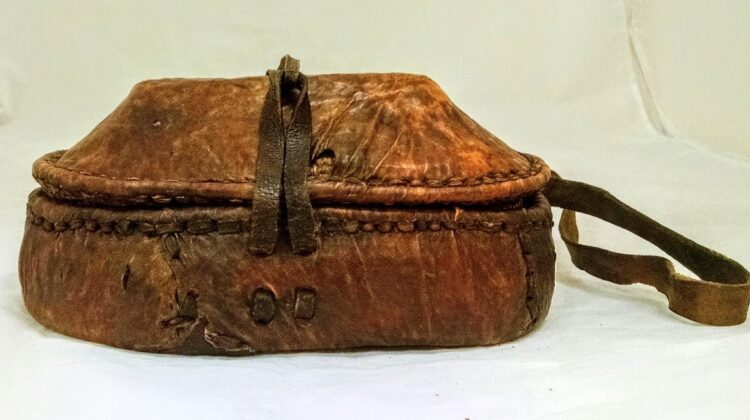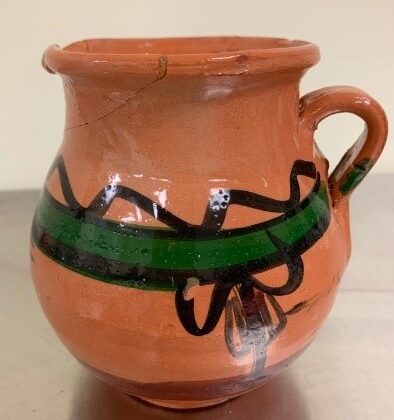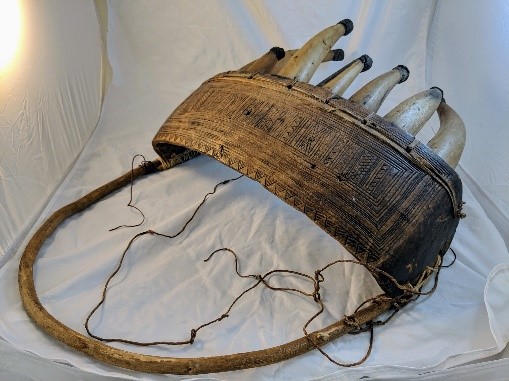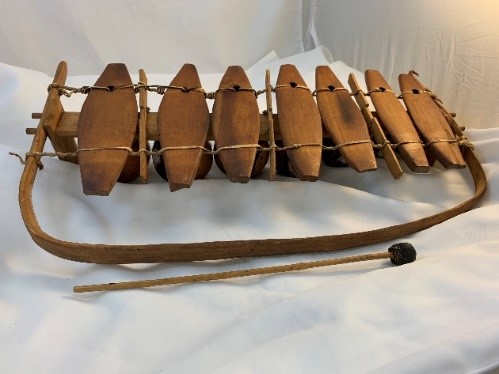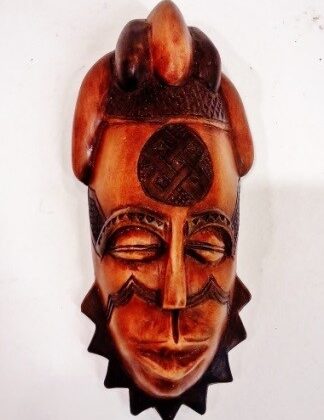The Maasai people are a nomadic culture in northern Tanzania and southern Kenya; they are livestock herders who rely heavily on cattle both for food and for products such as leather. Basketry is a tradition practiced throughout Africa, and it is likewise practiced by the Maasai. Baskets are used for many purposes, including winnowing and measuring grain and … [Read more...] about Maasai Leather Basket: Researched and Conserved by Sarah Teel
This Algerian pouring vessel was created and decorated in the tradition of the Kabyle-Berber culture, and it was intended for use in the traditional storage and serving of drinking liquids. Like other Algerian pottery, the vessel was hand-thrown in red terracotta clay and then decorated with colored mineral slips using brushes of goat hair set into wet clay … [Read more...] about Algerian Pouring Vessel: Researched, Conserved, and Reconstructed by Sabrina Osment
Xylophones are instruments that originated in West Africa by the mid-14th century, and their use subsequently spread to the central and eastern regions of Africa. The kundung xylophone was introduced to the Berom people of Nigeria by the Bagirmi people of Chad in the 1930s. While many musical traditions vanished through British colonization and the … [Read more...] about African Kundung Xylophone: Researched, Conserved, and Repaired by Ashley McLaughlin
To make a bala, first a wooden frame, traditionally made of bamboo, is constructed. The keys are each made of a piece of African rosewood that is roughly carved down to size and then set over a low fire for several weeks to completely dry out. When fully dry, the keys are refined and then tied onto the wooden frame using leather cords. A gourd resonator is carved with a hole … [Read more...] about Mande Bala Xylophone: Researched, Conserved, and Reconstructed by Elisabeth Barber
With over 3,000 diverse ethnic groups spread over 54 countries, Africa offers a huge variety of traditions, customs, and forms of art. Among the most famous artworks produced on the continent are functional masks, which reflect the great importance of theater and masquerades in African education, ritual, and entertainment. Different forms of masks include face masks, body … [Read more...] about African Masks and Headdresses: Researched by Chaney Jewell

